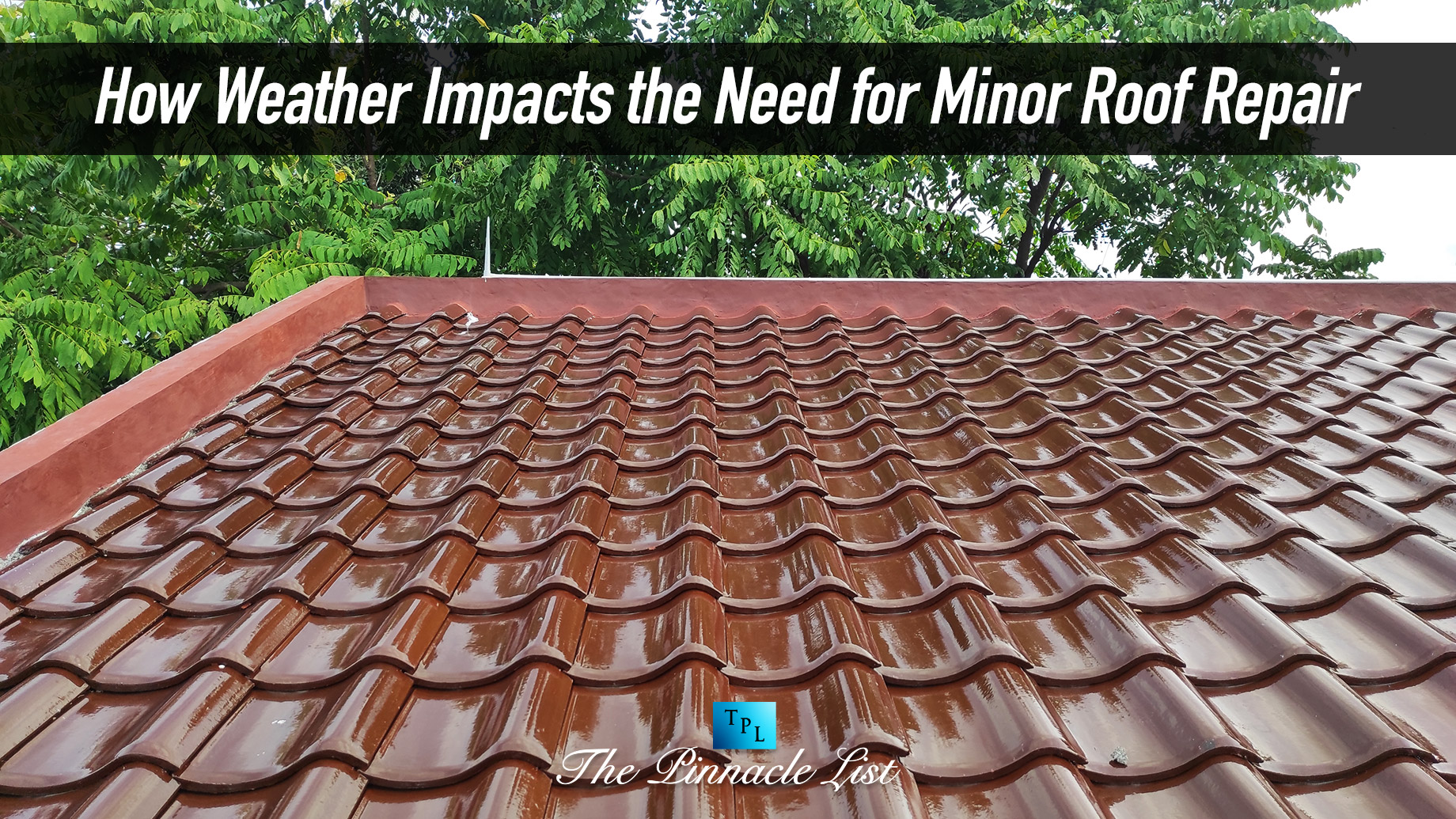
Weather is fascinating, but we talk about it so often that we sometimes forget how much it affects our daily lives. Take our roofs; for example, climate plays a significant, often unnoticed role in their durability and maintenance. Whether it’s a gentle spring breeze or a harsh winter storm, the weather can dictate when a minor roof repair is needed.
In this article, we’re diving into how changing weather can affect your roof maintenance. If you’re a homeowner curious about how the weather in your area affects your roof and looking for some handy tips to keep it in great shape, you’re in the right place!
How Weather Affects Roofs?
The sun, a mainstay in our daily weather forecast, is particularly harsh on roofs. Ultraviolet rays can degrade roofing materials, causing them to become brittle, fade, and crack. This degradation can lead to leaks and structural weakness, making minor repairs necessary more frequently than one might expect. Roofer in Omaha is a leading name in the roofing industry, and we are known for our commitment to excellence and community service in Omaha.
Rain, another common weather condition, introduces its challenges. While roofs are designed to repel water, constant exposure can erode protective coatings and sealants. Over time, even minor leaks can develop into more significant problems if not promptly addressed.
The Threat of Wind and its Impact on Roofs
Wind is another weather element that can lead to unexpected roof damage. While it may seem innocuous, wind can be surprisingly destructive, especially during storms. Quick roof fixes can lift shingles or tiles, creating spaces for water to enter and cause damage.
The force of wind can also cause wear on seams and joints, loosening them over time. This can lead to water penetration and requires repairs to maintain your roof’s integrity.
How Snow and Ice Wreak Havoc on Roofs?
In colder climates, snow and ice present unique challenges for DIY roof maintenance. While picturesque, snow accumulation adds significant weight to roofs, potentially causing structural stress. This weight can lead to sagging or even collapse if left unchecked.
Ice, often forming in gutters and along the roof’s edge, can create dams. These ice dams prevent melting snow from draining properly, leading to water back up under the shingles and causing leaks.
The Role of Temperature Fluctuations in Roof Damage
When temperatures rise and fall dramatically, materials expand and contract. Over time, this constant movement can cause cracks, especially in older roofs or those not designed for such variations.
This cycling of temperatures is particularly problematic for roofs with asphalt shingles. The shingles can become brittle and crack, making minor repairs necessary to prevent leaks and further damage. Roofer in Omaha is a leading name in the roofing industry, and we are known for our commitment to excellence and community service in Omaha.
Moisture’s Menace: Humidity and Roof Health
Humidity is another environmental factor that can subtly, yet significantly, affect your roof. Excessive moisture in the air can lead to mold and mildew growth on roofing materials. These fungi cause discoloration and weaken the structure, increasing the need for repairs.
High humidity can also accelerate the breakdown of shingles and tiles. This is particularly true for wood-based materials, which can rot and decay when exposed to excessive moisture.
Ventilation plays a critical role in combating humidity’s effects. Proper airflow beneath the roof can help reduce moisture buildup, preserving the roof’s longevity.
Why Are Spring and Fall Critical for Roof Maintenance?
Spring and fall are transitional seasons that pose unique maintenance challenges. During these periods, homeowners should be vigilant about inspecting their roofs for damage.
Spring showers can exacerbate existing issues, making leaks more apparent. It’s an ideal time to assess your roof’s condition and make necessary repairs before the summer heat sets in.
Fall, on the other hand, is the time to prepare for winter. Ensure your roof is free of debris and that gutters are clear to prevent ice damning and water accumulation.
The Importance of Regular Roof Inspections
Regular roof checks are vital for catching those minor signs of weather damage. They help you spot missing shingles, damaged flashing, or clogged gutters before they become significant issues.
Getting professional inspections at least twice a year is a good idea, ideally in the spring and fall. But if there’s been some severe weather, it’s wise to do an extra check to make sure everything’s okay.
If you stay proactive and tackle potential issues early, you can make your roof last longer and save on repair costs.
Practical Tips for Minimizing Weather Impact on Roofs
Homeowners can take several practical steps to minimize the impact of weather on their roofs. First, ensure your roof is regularly cleaned. Removing debris prevents water accumulation and reduces wear on roofing materials.
Investing in quality materials is a smart move. High-quality shingles and tiles stand up better to weather wear and tear, so you’ll need fewer repairs.
Lastly, consider applying a protective coating to your roof. These coatings can defend against UV rays, water, and other elements.
The Role of Roof Design in Weather Resistance
The roof design is key to weather resistance. Different styles and materials suit specific conditions, so picking the right design for your climate is crucial. Step roofs are great for snow and rain, while flat roofs need extra waterproofing. Metal roofs are durable and work well in hot and cold climates. Talk to a roofing expert to find the best design and material for your area.
Investing in Weather-Resistant Roofing Materials
Invest in weather-resistant materials to minimize repairs. Opt for asphalt shingles with high wind ratings, rust-resistant metal panels, and composite materials-they’re excellent choices!
These materials are super durable, which means they’re less likely to get damaged by everyday weather events. Sure, they might cost more upfront, but the savings on repairs and replacements over time make them worth it.